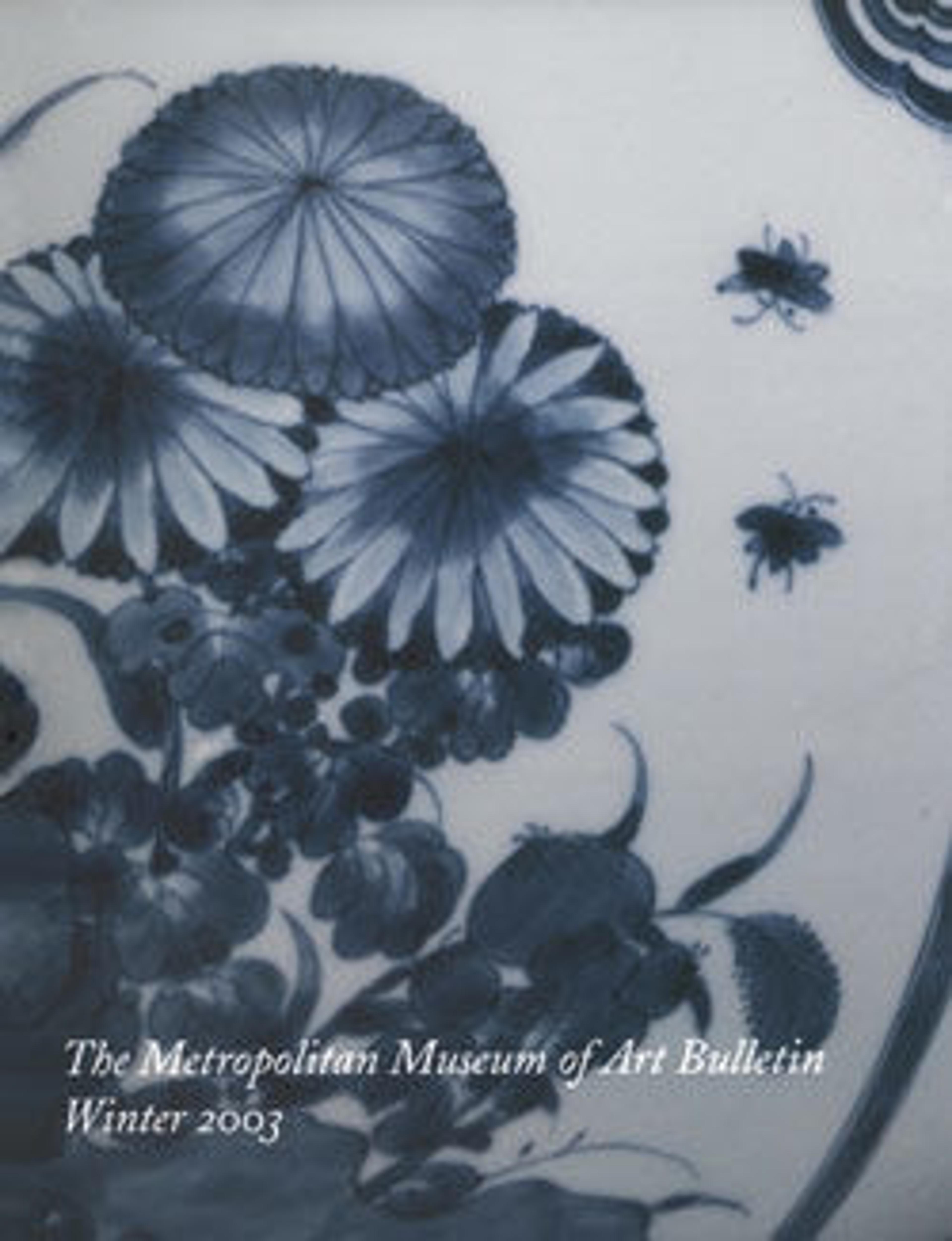Platter
This monumental punchbowl, with its original cover and platter, must have been one of the most ambitious porcelains to grace an American colonial household. We can only speculate as to how the bowl, the decoration of which indicates that it was made for the Swedish market, found its way to a prominent Charleston family during the eighteenth century. It was listed among the effects of Mary Brandford Bull, upon her death in 1772, as "1 large China Bowl Dish & Cover." The Bulls, one of Charleston's wealthiest families, lived in the grand style. Through the four daughters, the bowl descended in the family and ended up in Philadelphia by 1790. The detailed painted scene on the platter is based on a 1691 engraving of the Swedish Château of Läckö, on Lake Vänern. Two other Swedish châteaus drawn from earlier print sources are represented on the bowl; the cover features two Swedish churches in a landscape with huntsmen, fishermen, and sailors.
Artwork Details
- Title: Platter
- Date: 1745–55
- Geography: Made in China
- Culture: Chinese, for Swedish market
- Medium: Porcelain
- Dimensions: H. 3 in. (7.6 cm); Diam. 21 3/4 in. (55.2 cm)
- Credit Line: Purchase, Joseph Pulitzer Bequest, 1940
- Object Number: 40.133.2
- Curatorial Department: The American Wing
More Artwork
Research Resources
The Met provides unparalleled resources for research and welcomes an international community of students and scholars. The Met's Open Access API is where creators and researchers can connect to the The Met collection. Open Access data and public domain images are available for unrestricted commercial and noncommercial use without permission or fee.
To request images under copyright and other restrictions, please use this Image Request form.
Feedback
We continue to research and examine historical and cultural context for objects in The Met collection. If you have comments or questions about this object record, please contact us using the form below. The Museum looks forward to receiving your comments.
